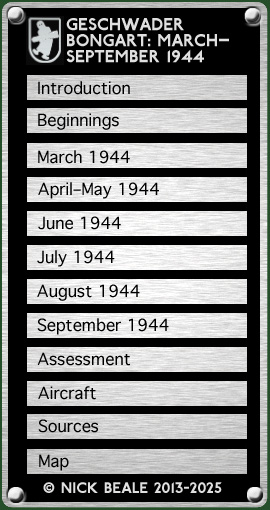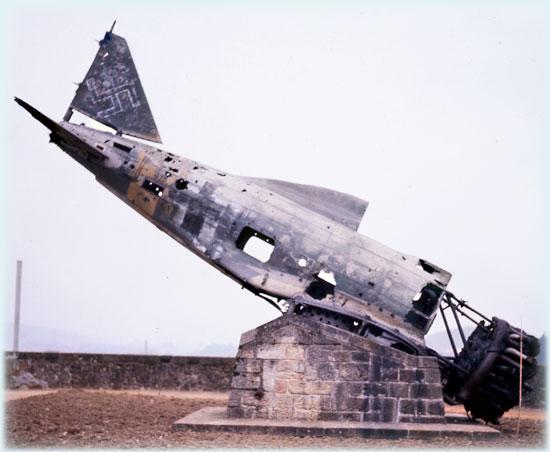In 1968 or ’69, I was with my parents travelling through France to a holiday in Spain. We’d stopped in Limoges and there, on a plinth in the Bishop’s Gardens, was a wingless aircraft carrying faded German crosses. A plaque said that it had been brought down by the Resistance in 1944 and I thought it was something Italian but it wasn’t until I got home and could look it up that I found out that it was a Reggiane Re. 2002. This article is by way of following up that first encounter.
This piece is rooted in the work of several researchers. After I started using ULTRA and Signals Intelligence material in 1987, I came across mentions of Geschwader Bongart, a unit I’d never heard of previously, which flew the Re. 2002; and I read Rémi Baudru’s article about that machine in Jet&Prop magazine in 1992. In 1999, Jean-Louis Roba wrote in Barry Rosch’s Luftwaffe Verband Journal about the Geschwader, prompting Larry de Zeng and me to respond separately with what we knew. Jean-Louis knew about Bongart himself; I had some intercepted material and captured aircraft reports; Larry outlined the Geschwader’s organisational history; Jim Crow (who died in 2019) contributed a number of photos of its Re. 2002s. Geoff Thomas and I corresponded about the unit, and his extensive research into the Vercors operation (in which Bongart's aircraft participated) appeared in 2003 as part of his book on KG 200 (completed by Barry Ketley after Geoff’s untimely death). In 2005, Andrew Arthy wrote an article on Bongart for his website, including entries from III./SG 4’s war diary covering that Gruppe’s brief spell of operations alongside Geschwader Bongart (something my own notes from the same source hadn’t included — in 1990 I didn’t foresee writing this article). The Geschwader cropped up several times in my researches for the articles here on Operation Dragoon, Jagdgruppe 200 and Sonderstaffel Kaatsch, so I thought I’d put together what I’ve got. To give it a wider context, I’ve also tried to incorporate or link to my other research which alludes to anti-Resistance operations by the Luftwaffe over the French interior in summer 1944. My suspicion is that the record of Bongart’s operations is unlikely ever to be complete although much might yet be pieced together in France from documentation of the Resistance’s engagements with the occupying forces. Although I have included casualty figures for some of the actions, they are not the last word: the totals given by both sides could vary markedly from each other and from postwar findings. For some detailed examples of such discrepancies, see here. Finally, a warning about the terminology here. To the Germans, the irregular forces they fought in France were variously “partisans”, “gangs” or “terrorists” while the formations they used to counter them frequently had “security” in their titles. Where I reproduce that historic language, this must not be interpreted as my accepting the Germans’ evaluation of their own or their opponents’ moral standing or tactics. Also, the French Resistance was never a monolithic organisation, even after it was ostensibly unified as the FFI (Forces Françaises de l’Intérieur) and nor was it entirely French, numbering Spanish Republicans, Allied evaders, German anti-fascists and more among its ranks. I have used the terms Resistance, FFI and Maquis as ones generally applicable to insurgents in the mainly rural parts of France under discussion but I recognise that some of the groups concerned may have had more specific (e.g. Communist or Gaullist) loyalties. continued on next page …
|
|||



